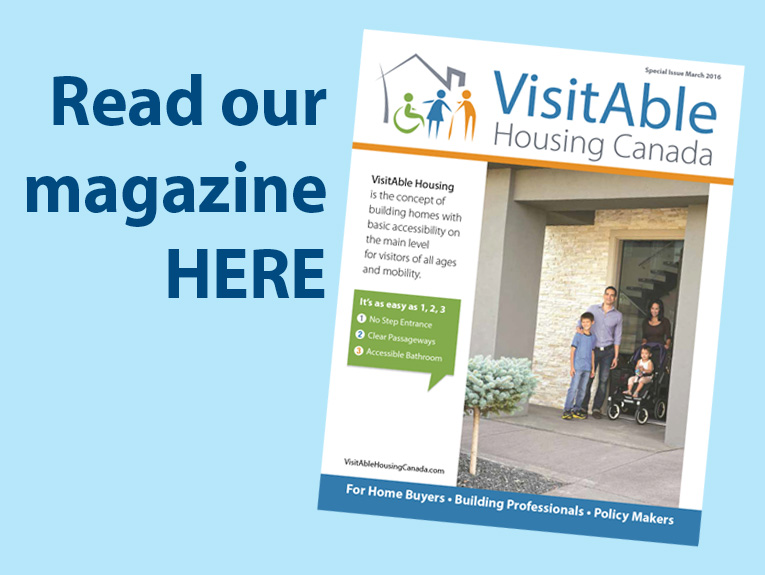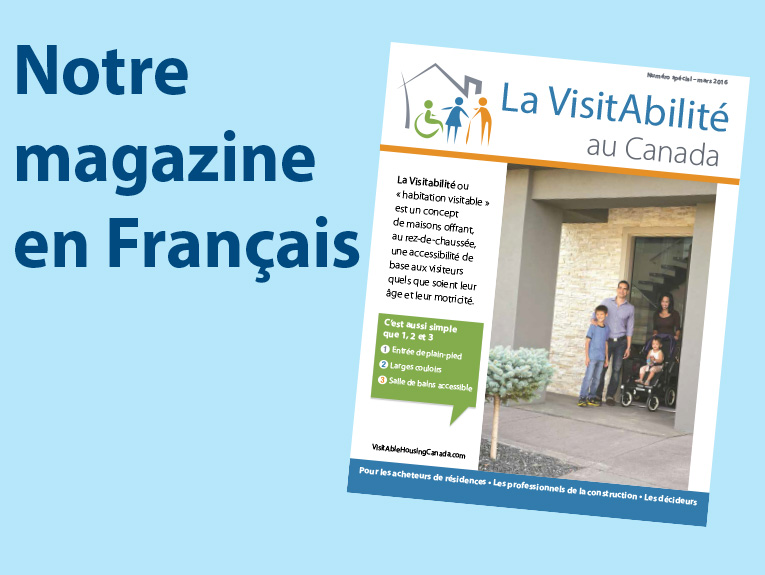In European countries, the policies and laws appear to require VisitAbility or VisitAble-like features, rather than merely incenting buyers and builders to create these forms of housing. These policies also tend to go beyond the public domain. In 1994, Sweden incorporated accessibility into the Swedish National Building Code. The main rule regarding accessibility states that “Buildings containing housing, work space and facilities for public use, must be designed and constructed in such a way that they are accessible and usable by persons with limitations of mobility or orientation capabilities” (BVF 1994, §12).
The United Kingdom developed the Lifetime Homes program in 1993 that contained 16 design features that ensure a new house or flat will meet the needs of most households. The Foundation’s efforts also led to the revision of Part M of the British Building Regulations. This section of the building code requires homebuilders to construct new housing to standards that permit people with disabilities, particularly wheelchair users and those with mobility or ambulant impairments, to visit a house and have access to at least a common space and toilet on the main floor. Wales, Scotland, and Northern Ireland have developed and adopted similar regulations.
Generally in Canada, initiatives that have promoted housing with “VisitAble-like” features in the private domain have generally been “one-off” initiatives, with little or no legislative efforts behind the initiative. In the United States, many jurisdictions introduced policies and legislation related to VisitAble housing. Much of the policies and legislation generally fall into the following categories:
1) Builder Mandates
The majority of VisitAbility laws in the United States apply to housing that receives some kind of public financial assistance. Examples include laws in Urbana, Illinois; Long Beach, California; Southampton, New York; Onondaga County; San Antonio, Texas; Iowa City, Iowa.
In the United States, only two jurisdictions require VisitAbility features in all new single-family private homes: Naperville, Illinois and Pima County, Arizona. In the US, Vermont is the only jurisdiction with state-wide legislation that applies to private homes.
2) Builder Incentives
An example includes Southampton, New York, which offers reduced fees or building permit waivers for those who incorporate “Basic Access” features into the construction of one- and two-family detached housing. The Town outlines “Basic Access” features as 1) one step-less entrance into a dwelling; 2) 32-inch clearance on first-floor doors and hallways; and 3) a half-bath located on the first floor that is wheelchair maneuverable
3) Consumer Incentives
Examples include Virginia (1999) and Georgia (1999), which have implemented tax credit incentive programs of up to $500 for consumers who add specific accessibility features to their homes.
4) Consumer Awareness/Promotion
An example of this is the City of Irvine, California, which offers a unique method of promoting VisitAbility features. In 1999, the Universal Design Program was implemented, requiring builders to provide a list of 33 optional accessibility features to consumers, all beyond the characteristic VisitAbility requirements. Builders, however, are not required to incorporate these features into homes. Consumers ultimately decide whether or not they would like the features included in their new home. As of 2002, 14 builders were participating in this program.
For a detailed policy review on VisitAble housing, click on the following link: Policy Review – Visitability.
Policy References
Bolingbrook VisitAbility Code
Bolingbrook is a town in Illinois, USA. The town introduced the VisitAbility Code in 2003, mandating VisitAble housing for all newly-built dwellings. To download the Code, click on the following link: Bolingbrook Code.
Comparison of VisitAbility Standards
A number of jurisdictions in Canada and abroad developed standards related to VisitAble housing. Jill Weiss, Chair of the Persons with Disabilities Advisory Committee for the City of Vancouver, provided a comparison of some existing VisitAbility Standards. To download the comparison of VisitAbility Standards, click VisitAbility Comparison.



